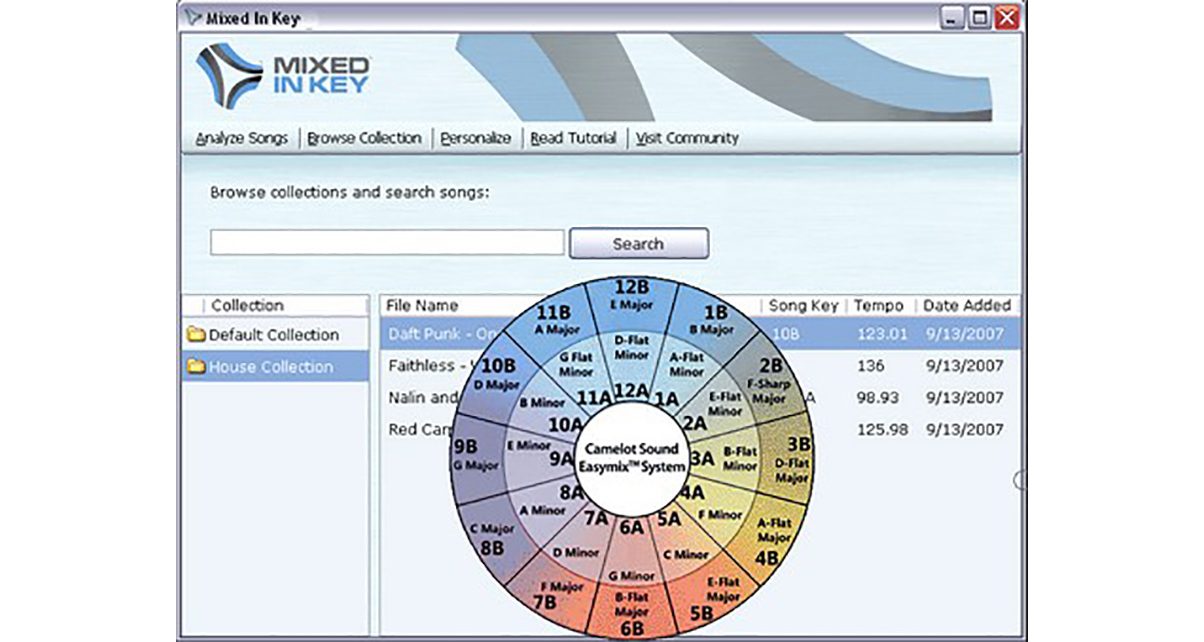
You may have heard “mixing in key”, or “harmonic mixing”, mentioned by DJs. You may even be dimly aware of what it means – that it’s about making sure tunes match musically in order to mix them more smoothly.
But if you’ve never done this before, you may think it’s hard to do, or that if you’re not able to play a musical instrument, you’ll not be able to work out all the stuff with scales and notes that’s necessary to achieve this type of mix. Luckily, nothing could be further from the truth, and today, we’ll show you how you too can use harmonic mixing in your sets.
To start using harmonic mixing, you need to achieve these three steps:
1. Tag your songs with their musical key
To mix in key, you need to know the key of your tunes! There are several ways you can do this. If you use Virtual DJ, you’re in luck: The software will work out the musical key for you and display it in the track information box. If you don’t, you need to have some software work it out for you. Software like Rapid Evolution 3, BeaTunes and Mixed in Key will do this for you – Rapid Evolution 3 is free, but many professionals swear by Mixed in Key (see below for why).
Depending on your DJ software, you may decide to have your chosen program tag the key information in a custom key field of the MP3 tag, in the comment field, or in the filename. The important thing is that you work out a way of getting the key information into your MP3’s meta data or even its file name , so you can display it when you’re browsing your tunes.
2. Get the Camelot Wheel and understand how to use it
This is the big secret. Use Google Images to search for “Camelot Wheel” (get a large version) and download your own copy (hint: set it as your laptop background wallpaper so you can minimise your DJ software to quickly refer to it when playing).

This shows you every musical key there is. All of your tunes will have been tagged with one of those keys by your software of choice or when analysed by Virtual DJ.
Whether your software used standard notation (C major, D minor etc), or Mixed in Key-style notation (12B, 6A etc), you can use the wheel just the same, as it covers both systems. (In Virtual DJ, you can click on the key onscreen and it will switch between these two notations.)
Here’s how it works: You find the key of the tune you’re currently playing on the wheel, and you can mix any tune into it that is the same key, or an adjacent key on the wheel. So you can move left or right one segment, or in or out one segment (you can’t move diagonally). These mixes will sound great, because the keys are the same or related.
3. Apply it to your mixing
Now you’ve tagged your tunes and you understand how to use the Camelot Wheel, here’s some practical tips to help you apply your new-found knowledge to your mixing:
- Switch your software’s keylock feature on – As we discussed last week in our keylock introduction, harmonic mixing relies on this feature, which holds the key steady when you’ve beatmatched your tunes
- Choose tunes that are close in BPM – Keylock sounds best on tunes it doesn’t have to work too hard on, which are always those close to the BPM of your current tune
- Work around the wheel to play through your collection – If you order your collection by key, you can easily work through your setlist mixing adjacent keys as you go
- Use your ears! – Nothing in digital DJing is a magic fix for not using your ears. Sometimes key detection software gets it wrong; sometimes keylock distorts tunes beyond what you’ll deem to be acceptable; sometimes tunes sound great in totally unrelated keys; and just because tunes are in the same, key, it doesn’t mean mixing them together will sound any good! So always listen critically and don’t rely blindly (should that be deafly?) on key detection software
Bonus power tip
As you can see from your Camelot Wheel, there are two ways of expressing musical notation. You may have noticed that with the “letters and numbers” notation system, adjacent segments also have adjacent numbers or letters. So 11A is adjacent to (and will always mix into) 10A and 12A; and any B will always mix into any A and vice versa, as long as they share the same number.
This notation system is native to Mixed in Key, which is one reason why that software is such a popular choice as a key detection program.
Using this system, you don’t even have to have the Camelot Wheel to perform harmonic mixes, as it’s so simple to remember the method. Just always mix up or down a number, or from an A to a B or vice versa with the same numbers.
So that’s it – your quick 1-2-3 of harmonic mixing. If you’re not already experimenting with key mixing, do it – it’s one of the great leaps forward for digital DJing and done properly, it can really improve how your DJing sounds.
Do you mix in key? Do you have any power tips to share with the rest of our readers for better harmonic mixing? We’d love to hear your thoughts in the comments.




